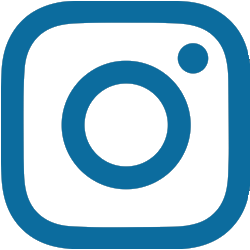We do check-ups for many things in our day to day life, especially when it comes to our physical and mental health. But, what about our financial health? We often forget about this aspect of our lives but it’s just as important to check in on regularly.
Not only can our financial situation change and fluctuate from year to year (or even throughout the year) but our financial goals can change too. For this reason, I recommend that you take the time to sit down and do a financial checkup at least once a year. Not sure how? Here are five steps to get you started.
1. Update your budget
As you change, so does your budget. Things like differences in daily habits, eating, hobbies, and your job can all affect your budget. Plus, don’t forget any cost creep for your bills! They always seem to be going up. Paying attention to and identifying these changes will help you ensure that you stay on top of your financial goals.
Take the time to break down the costs and see where your money is going. This will allow you to figure out what areas you need to cut back on. Habits like eating out and your daily Starbucks fix can be easily curbed. Things like bill payments, however, can be a bit trickier to cut back on. That being said, if you find that you are overpaying on certain bills, it could be a good time to shop around and see who can offer you a better rate. After all, you work hard for your money. Don’t part with it too easily if there are better deals out there.
2. Cut out unnecessary expenses
After you have updated your budget to see where your money is going, take the time to consider if you can get rid of anything. Often, we sign up for programs, memberships, or subscriptions but end up not using them enough to get their full value.
For example, do you really need Netflix, Amazon Prime, Crave AND cable TV? Or can you cut one or two out? What about your gym membership? Are you actually using it? How about any subscriptions? Do you still read the websites or get excited about receiving the boxes? If the answer to any of these things is ‘no’ then get rid of it. You have better places to put your money.
3. Review your retirement and emergency funds
Retirement and emergency are two funds you should be contributing to regularly. Emergencies can happen at any time and you want to be prepared. If you had to dip into yours then make sure you build it back up again as soon as possible. You never know when you will need it, so make this a priority.
As for retirement, many Canadians wait until the last minute to contribute to their RRSPs which just adds stress during tax season. One of the best things you can do is set up an automatic deposit every month or even biweekly if you can afford it. That way, you will be contributing regularly without having to even think about it.
4. Save smarter
On top of your retirement and emergency funds, you probably also have several saving goals. This could be for a house, a car, a vacation, etc. If you haven’t yet, put these savings into high interest savings accounts (HISA) which will allow you to earn interest on any money you have deposited.
At the same time as you check in on your HISAs, you should also look into your investments. This is a good time to rebalance them if you need to. Another thing to consider is your risk tolerance. Are you still comfortable where you are based on how the markets have performed? That being said, remember not to get too caught up in the news headlines. You want to think long-term with your investment goals.
5. Strategize how to tackle any debt
Don’t forget about any debt when you do your financial check-up since debt is what is most likely to prevent you from reaching your financial goals. Have you added to your debt this past year? If yes, what can you do to help pay it back? Can you go back to your budget and see if you can make some room to allocate more of your funds to pay it off? Is it possible to get a low interest loan so you can pay off your high interest debt?
Nobody expects you to be able to pay off debt all at once. But if you do it little but little you will feel a confidence boost as you see those numbers dropping and realize you are working towards your goal of becoming debt-free.
A financial checkup doesn’t require very much time. However, to implement real changes, you may need to take a few hours making adjustments. It may sound tedious, but the payoff will be worth it.






